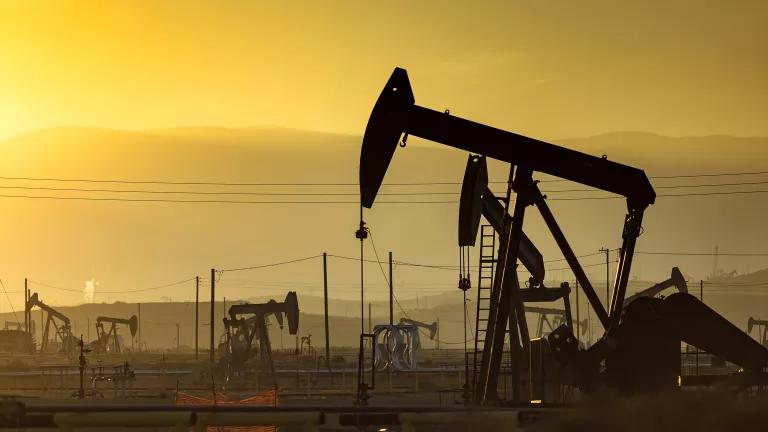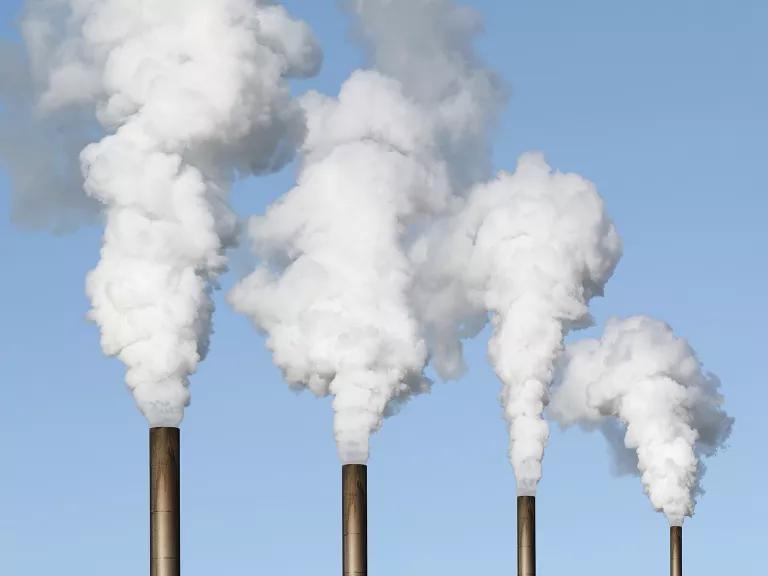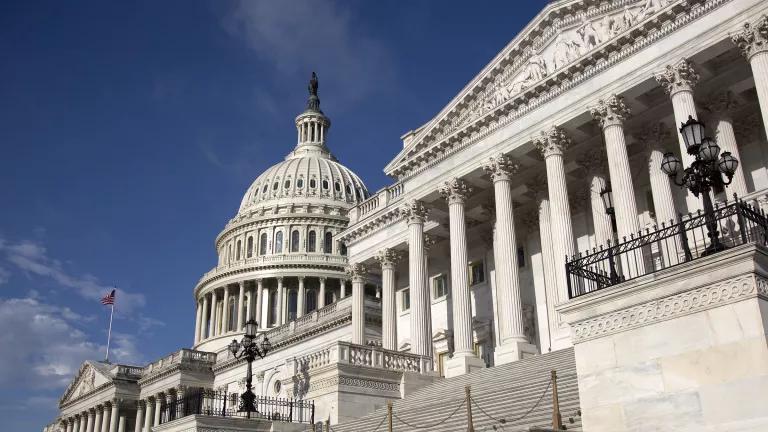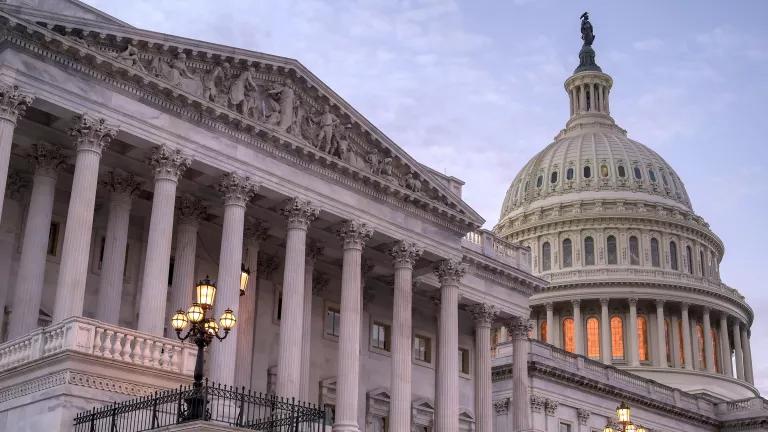On Eve of New Climate Regs, EPA Updates State Plan Roadmap
As EPA readies climate standards for oil and gas and power plants, the agency modernizes its rules to guide the state planning process.

Oil pumpjacks near Bakersfield, California. | Hal Bergman/iStock
EPA is about to announce landmark climate protection standards—rules to curb the oil and gas industry’s methane pollution are coming in the next few days and rules to cut power plants’ carbon pollution are expected next April. These are the two biggest climate-polluting industries, exceeded only by vehicle emissions.
In preparation, EPA recently updated the Clean Air Act implementing rules that will guide states in regulating their existing oil and gas facilities and power plants, and other industries that may be regulated in the future. The new rules comprehensively modernize the state implementation process for the first time since Gerald Ford was president in 1975.
How Section 111 Standards Work
Section 111 is the principal part of the Clean Air Act for regulating climate-changing pollution from industrial sources. Under Section 111(b), EPA standards apply directly to new and modified facilities. Under Section 111(d), EPA and states work together to cut pollution from existing sources, which make up the vast majority of facilities in both industries.
As the Supreme Court has confirmed, the Clean Air Act puts EPA in the senior role in this federal-state relationship:
Although the States set the actual rules governing existing power plants, EPA itself retains the primary regulatory role in Section 111(d). The Agency, not the States, decides the amount of pollution reduction that must ultimately be achieved. It does so by … determining … “the best system of emission reduction ... that has been adequately demonstrated for [existing covered] facilities.” … The States then submit plans containing the emissions restrictions that they intend to adopt and enforce in order not to exceed the permissible level of pollution established by EPA. (West Virginia v. EPA, 142 S. Ct. 2587, 2601-02 (2022)).
Accordingly, when regulating existing sources, EPA starts by issuing “emissions guidelines”—a rule that defines the “best system of emission reduction” (BSER) and the emissions reductions achievable with that system. The guidelines set timetables for states to submit plans containing standards and deadlines for sources to meet those standards. EPA reviews plans and approves as “satisfactory” those that meet the requirements. EPA issues a federal plan if the state doesn’t submit any plan or an unsatisfactory one.
Timelines for States and Sources
The implementing rules tell states and other stakeholders how to apply the emissions guidelines to each state’s existing sources. Let’s start with timetables for state plans. When EPA issues emissions guidelines for an industrial category, the updated implementation rules give states 18 months to adopt state plans. This is double the time allowed in the 1975 rules, when Section 111(d) rules generally addressed smaller industries and fewer states. But it is much less than the three years the Trump EPA tried to allow. (The Trump changes failed in the D.C. Circuit.)
The 18-month state planning period applies unless EPA allows a different length of time in the emissions guidelines rule for a particular category. The forthcoming guidelines have proposed 18 months for oil and gas facilities, and 24 months for power plants. (Update: The final methane rules issued on December 2 also allow 24 months for state planning.)

Emissions billowing from smokestacks. | iStock
The emissions guidelines for each industry also define the emissions performance levels that EPA has determined are appropriate for sources in that industry. When EPA defines the BSER for various facilities or operations, the agency also identifies the emissions rate (e.g., pounds of CO2 per megawatt hour) that sources using the BSER can achieve. In some cases (e.g., methane leaks from oil and gas equipment), emissions are too hard to measure or capture with add-on pollution controls; for these EPA specifies design, equipment, operations, or work practices instead of emission rates.
The guidelines include compliance deadlines by which facilities or equipment must meet their applicable standards. Compliance deadlines range from almost immediately for low-cost procedures like leak detection and repair at oil and gas facilities to five or more years’ lead time for more capital-intensive measures like retrofitting power plants with advanced pollution controls.
Each state then adopts its standards and submits a state plan to EPA for approval. A state has the option to adopt the guidelines’ emissions limit (or its equipment/work practice requirements) as is. Alternatively, a state may adopt a different combination of limits, premised on other control measures, if it demonstrates to EPA that the alternative limits will achieve at least as much emissions reduction. Sources also may comply with their emission limits by using technologies or approaches different from EPA’s BSER.
Limited Variances
Section 111(d) gives states limited authority to issue variances, based on consideration of “remaining useful life and other factors.” These variances let specific sources operate subject to weaker emission limits. The 1975 regulations allowed variances in cases of “physical impossibility” (i.e., where there was no room at a facility to install pollution controls) or when costs were “unreasonable.” Experience showed, however, that clearer guidance is needed to assure that states treat similar sources consistently and that unwarranted variances do not erode necessary emission reductions.
In response, the updated implementation regulations make clear that variances are supposed to be exceptional and are limited to sources whose characteristics are “fundamentally different” from those EPA considered when identifying subcategories and defining the best system of emission reduction. The regulations provide that a state has the burden of demonstrating the necessary differences. Small cost differences, for example, will not justify weakening standards. So, rather than allowing an outright exception to operate with higher pollution, each variance is supposed to represent an individualized determination of the best controls for that source. EPA has to approve any variances included in state’s initial plans or later revisions. These new safeguards will deter a race to the bottom within and between states.
Stakeholder Engagement
The implementation rules also require states to conduct enhanced consultation with particularly affected stakeholders. Regulated industries are always well informed and get their views heard. Now states will be expected to reach out to communities that are especially affected, either because they are overburdened by pollution or because they may be most affected economically.
Flexible Implementation and Stronger State Action
The rules clarify that states may allow systems of emissions trading (for appropriate pollutants and sources), and that states may adopt stronger-than-required emission limits in their state plans. These are both state options the Trump EPA tried to ban.
In sum, the updated implementation rules set a clear roadmap and a strong floor for state action to carry out their responsibilities under Section 111 as EPA issues emissions guidelines for curbing climate pollution from specific industries. Undoubtedly, they do not answer every question that states and other stakeholders may have. More details tailored to specific industries will be provided in the emissions guidelines for particular industrial categories, starting with oil and gas facilities and power plants. And further elaboration on specific implementation options can be developed through guidance as states develop and EPA reviews state plans.




